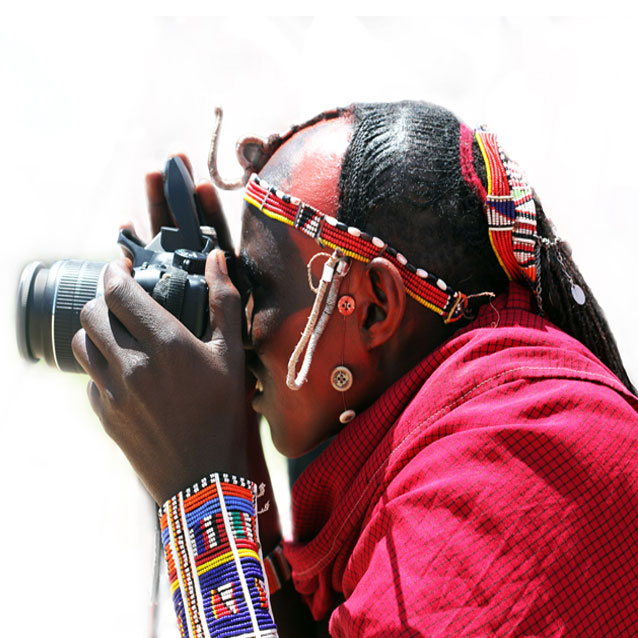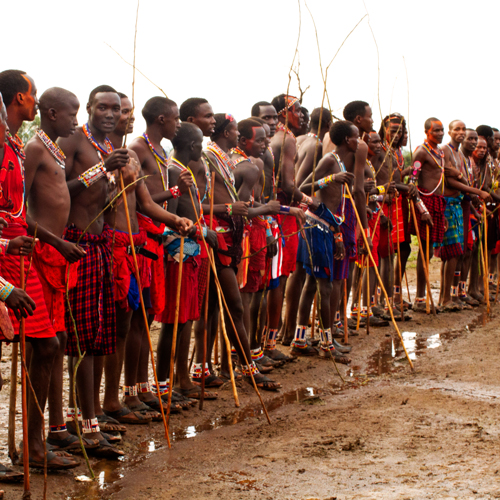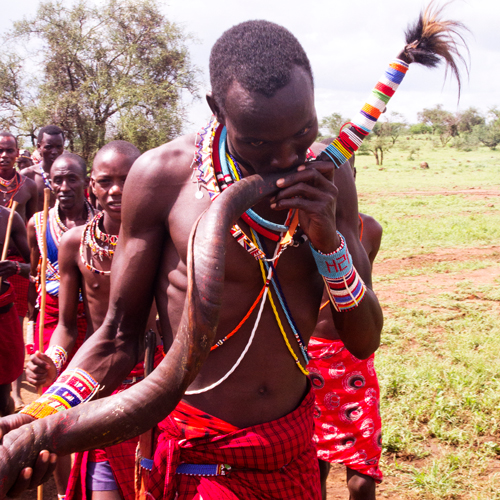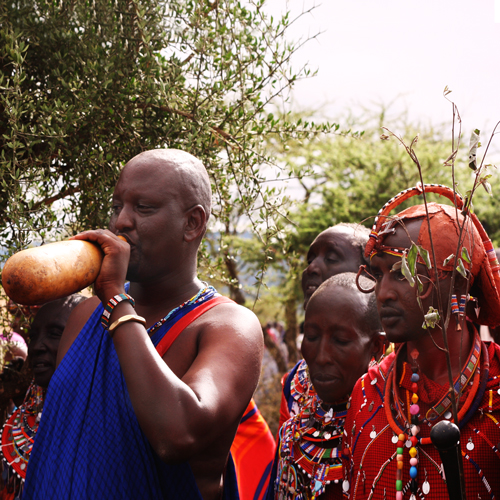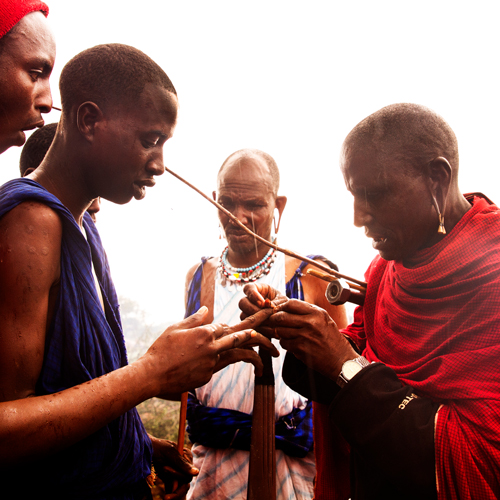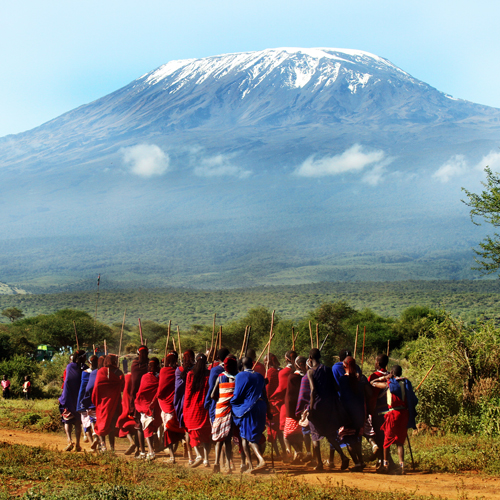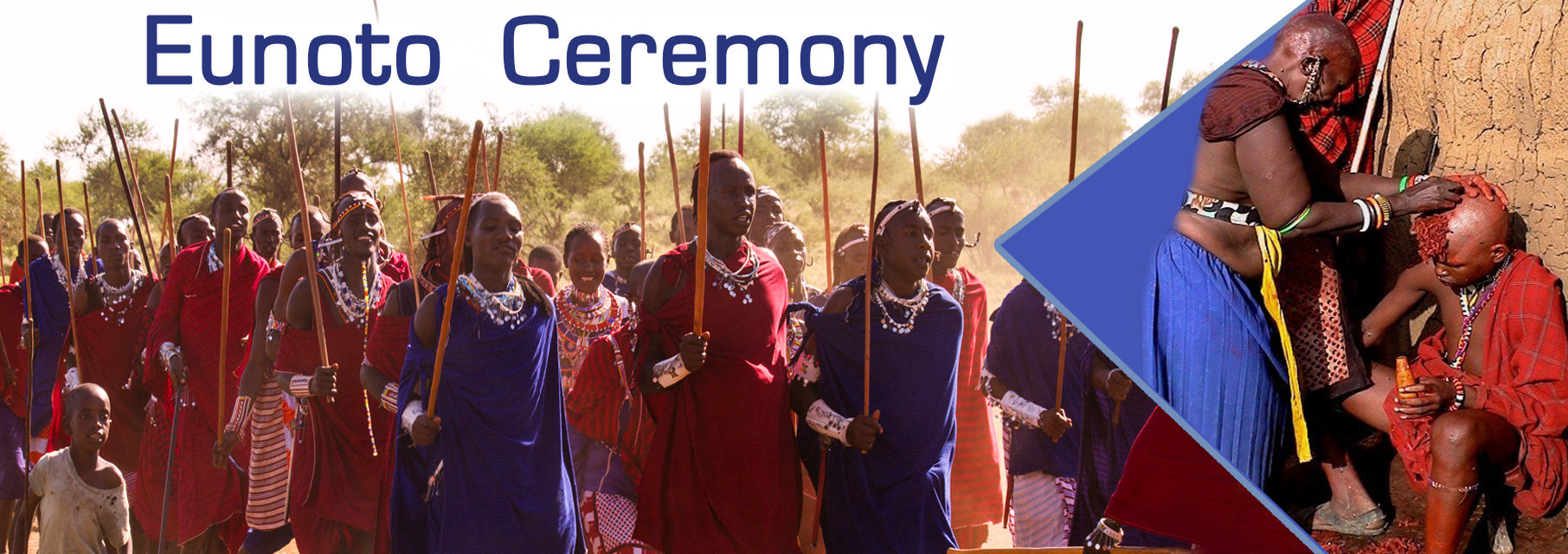
The Eunoto ceremony is a vital male rites of passage ceremony that is performed every generation (every 20 years) to mark the important transition of morans (Maasai warriors) entering into manhood. This is the most highly celebrated ceremony amongst the Maasai distinguished with its colorful and unique customs that are greatly honored in the life of a Maasai. The morans who undergo the ceremony evolve from a junior warrior (Il-barnot) to senior warrior (Ilmorijo), it permits the men to marry and allows them to engage in the decision-making processes in the community to prepare them to become future elders.
Eunoto Ceremony in Kenya & Tanzania
The Eunoto ceremony is practiced all across Maasai communities in Kenya & Tanzania yet, it is important to note that the initiation begins with the Ilkisonko Maasai in Tanzania. All the ilaguanak (traditional chiefs) will call of a declaration of Eunoto in Tanzania, they are the first people to undergo the ceremony. Each chief will prepare the Eunoto ceremony for their village throughout all sections of the Maasai spanning throughout Tanzania and Kenya until each warrior competes the ceremony.
Why Is It Urgent To Document The Eunoto Ceremony?
The Maasai are in a race against time to preserve their heritage for future generations, their traditional cultural knowledge is at risk of disappearing. This Eunoto ceremony only happens every 20 years for each age-set, therefore this is highly likely to be the last pure Eunoto ceremony with the traditions still intact because the Maasai are losing access to the communal land where these ceremonies traditionally take place. It is highly critical that the Maasai have an opportunity to document this ceremony to preserve their history for the next generation of Maasai and the world at large. The Eunoto ceremony is inscribed on UNESCO’s Urgent Safeguarding List of Intangible Heritage.
Eunoto Preparations
Eunoto preparation takes more than half a year to plan, it is ordained by the Oloiboni (spiritual leader) in Tanzania once he receives 9 cows by the age group. A few of the extensive preparations include selecting the right number of warriors to go to the manayatta, the location selection of the ceremony, building of the emanayatta with Osingira (house) at its centre, and many more preparations.
Eunoto Activities
MCV Involvement
MCV is committed to supporting the Maasai cultural custodians to manage their own archives and conduct their own ethnographic documentation to recover their own cultural patrimony from colonial institutions and share their own narratives to the world.
My Chosen Vessels (MCV) Maasai Media Team of Ilkisonko cultural custodians has been documenting the Maasai traditional knowledge for the past 9 years to preserve their cultural knowledge systems for the Maasai people and to educate a broader global audience. MCV is working with the Ilaiguenak (Maasai traditional chiefs) from Kenya and Tanzania to document and safeguard Maasai heritage. MCV has been documenting the Iltuati age set throughout the entire process of each stage and rite of passage ceremonies protecting the traditional knowledge including the three male rites of passage ceremonies Enkipaata, Eunoto, and Olng’esherr, that have recently been inscribed on UNESCO’s Urgent Safeguarding List of Intangible Heritage.
MCV is in the final stages of launching a Maasai Cultural Heritage Digital Museum and is opening a physical museum in Amboseli, Kenya in partnership with the Kajiado County Government of Kenya. We have curated exhibits using photography, videography, audio recordings and cultural materials to document sacred dances, chants, ceremonies, rites of passages, language, and traditional knowledge with over 200 high-quality videos and sound recordings.
Virtual Reality Videography
With your support, MCV will utilize the latest technology of 360-degree cameras to provide a virtual reality immersive up-close look at the rites of passages for the Maasai — taking viewers right into the middle of Maasai land surrounded in the breathtaking landscapes of Mount Kilimanjaro to an important sacred ceremony that only happens every 20 years when a Maasai morans (warrior) undergoes the rituals of becoming a man.
Maasai Media Training
Maasai Cultural Custodians will be trained on 360 camera equipment to film the ceremony and provide viewers a first-person experience.
Our goal is to transport viewers into the heart of this ceremony to experience Eunoto, just like the Maasai experience it.
Upcoming Art Exhibitions & Opportunities
This film will be made available to the tourist that visit the Maasai Cultural Heritage Museum near Amboseli National Park, we have an average of 600,000 park visitors annually. MCV will also showcase this Art Exhibition for the United Nations Permanent Forum on Indigenous Issues at the UN Headquarters in New York. This film will be also available to film festivals, museums, higher institution to show to their visitors upon request.
